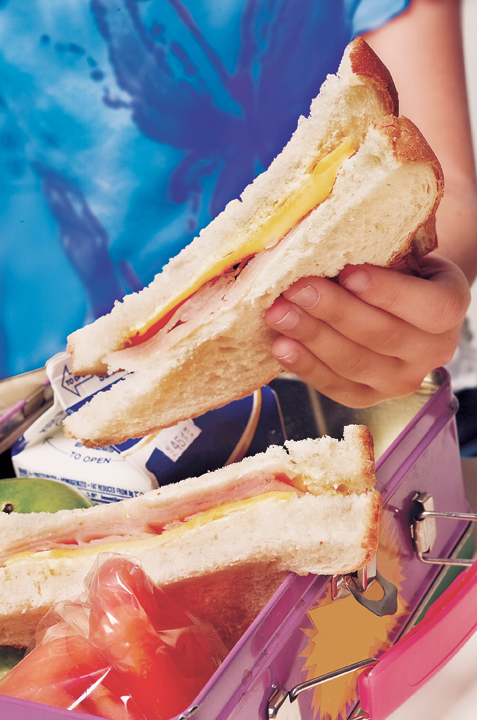- South Texas Students Meet Accordion Music Icons Los Tigres Del Norte In Edinburg Thanks To Khs America/Hohner Alianza Académica Initiative
- Fragile Planet Offers a Nighttime Wildlife Experience
- Falcons Soccer Off & Running
- Cameron County Receives Funds to Improve Two Parks
- Falcons Complete First Half of 32-6A
- School District to Help out Victims of California Wildfires
- Sand Castle Days Continued Despite Unexpected Weather
- Ready for District
- Discussion of Garbage Dumpster Rates, Agreements Between State & City on Highway Regulations, and More
- 31st Annual Shrimp Cook-Off is Right Around the Corner
Back to School Back to Sack Lunches
- Updated: August 23, 2013
 by Amanda Hill
by Amanda Hill
The back-to-school season is upon us, and each year I still get excited about the thought of crisp notebooks, freshly-sharpened pencils and a brand new lunchbox.
Growing up, packing my lunch was a daily event. My mom or dad would help me assemble a healthy meal of some sort of sandwich, fruit, vegetable or cheese stick and, if I was lucky, a dessert. Certainly there were healthy options offered at my school, but a lunch from home just seemed to give me an extra boost each day.
As kids get ready to go back to school, I’m sure lots of parents are doing the same things for their kids. But packing a lunch—or a few lunches—can be a challenge as parents look for new, healthy options to keep their kids fueled and prepared to do their best. Here are some helpful suggestions that may make the packing process a little easier.
WHAT TO PACK
The traditional “lunchbox recipe” of a peanut butter and jelly sandwich, apple, juice box and pretzels gets old pretty quick. Packed lunches don’t have to be boring—mix it up with healthy food options that your kids will actually eat. Here are some ideas to keep things fresh:
Sandwich wrap or pita–Instead of a sandwich, try adding lunch meat, lettuce, tomatoes and other fixings to a whole wheat wrap or pita.
Pre-packaged yogurt–Freeze a yogurt cup and send it, still frozen, in your child’s lunchbox. The yogurt will defrost by lunchtime but still be cold enough to eat.
Whole grain crackers–Crackers are an alternative to chips, and they still are fun to eat. You can include cheese cubes or a spread for dipping, too.
Salad–A fruit or green salad provides essential vitamins and can be a healthy side option.
Cut veggies–Carrot and celery sticks have stood the test of time, but you also might consider changing it up with broccoli, snap peas or edamame.
Trail mix–Mixing dried fruit, walnuts, almonds and even dark chocolate chips will pack a ton of nutrients into a sweet treat, which could be a good dessert option.
I found lots of great suggestions for healthy sack lunch options on the Livestrong website.
HOW TO PACK IT
When packing your kids’ lunches, be sure to follow these food safety guidelines from the American Dietetic Association (ADA) to protect them from foodborne illness:
Choose an insulated lunch bag over paper sacks or tin boxes. An insulated bag, thermos and freezer pack can keep food the appropriate temperatures (cooler than 40 degrees or warmer than 140 degrees). Food should not be left at room temperature for more than two hours—which is probably longer than the time between the first bell and lunch.
Keep it clean. Be sure to thoroughly wash all fruits and vegetables before packing. Disinfect your child’s lunch container each night with warm, soapy water. Clean all food prep surfaces before assembling the food.
Don’t just pack food. According to the ADA, 60 percent of kids don’t wash their hands before eating lunch. Throw in an anti-bacterial moist towelette and encourage handwashing before meals at home.
